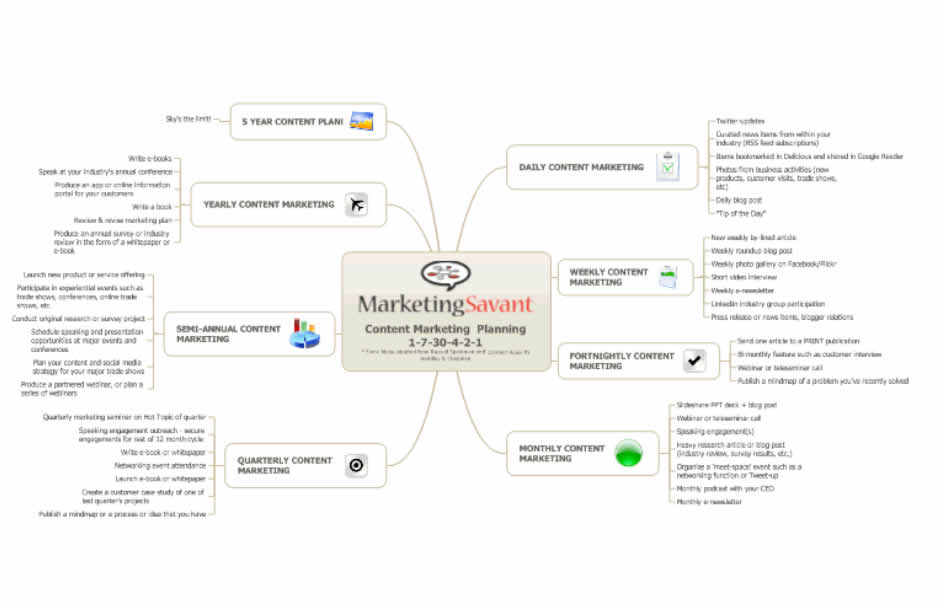
Lately we have been writing a lot about the several dimensions and aspects of content in various forms of communication.
In this post, Michele Linn, shares a 7-step plan to get started with content marketing.
A few years ago, my husband and I were preparing for our daughter’s arrival. Like many parents-to-be, we wanted to have everything ready before we brought our daughter home.
Not only were we prepping the nursery, but we also started thinking about everything from childproofing the house to saving for her college education. It was positively overwhelming!
It’s easy to feel the same way when planning your content marketing strategy.
You want to do everything right and have this brilliant, organized strategy, but as you start to lay out a plan, it’s not as straightforward as you think it will be. Where do you start?
Here’s my suggestion: have a roadmap of what you want to accomplish, but plan to take small steps. It’s just like planning for a baby: have the basics ready (diapers, clothes and a place to sleep), and know that you can figure out your way as you go along. You never know how your baby or ideal prospects will react, so it’s good to be flexible.
The key: just get started! Here are the seven steps I suggest to help you dive in.
1. Start with the end in mind
I often think about this question that Joe Pulizzi poses: “A year from today, what will be different in our business as a result of the content marketing program?”
Have a general vision in mind, and always ask if what you are doing is getting you closer to that goal.
2. Listen
Every company can benefit from listening to what their customers and prospects are saying about them – and about their competition. You’ll find out what matters to them, which is essential for creating content they want to read and pass along.
Of course, social media provides so many ways to listen. Here’s a great Slideshare from Stefan Betzold on social media monitoring tools (thanks to Mark Schaefer for bringing this to my attention on his blog).
3. Build personas
If you want to reach your audience, you need to know who your audience is and what they care about. I’m a big fan of creating buyer personas that you can regularly update as you learn more about your audience from listening and other methods.
4. Develop your core messaging
Decide what message you want to get across with all of your content. While you will likely have different spins for each audience, remember that all of your prospects are connected.
As Ardath Albee says, buyers/influencers are linked throughout the buying process, and they often pass information along. Make sure you story is consistent across all buyers.
5. Build your website
I’m a firm believer that your website is the best place to start when developing content. Even if you have stellar content such eBooks, webcasts, white papers, all roads ultimately lead back to your website.
If your website is not resonating with prospects and clients, you are ultimately losing business.
6. Create an editorial calendar for additional content
To help you deliver consistent content, it’s a great idea to develop an editorial calendar. I love the 1-7-30-4-2-1 framework from Russell Sparkman that provides a lot of ideas on how to consistently reach your audience with content.
It is ambitious for someone getting started, but you can scale it back and start gradually adding in more content and distribution channels.

7. Listen to feedback and be prepared to change
Like any parent can attest, you never know how your child will respond to something you are trying. Sometimes you think you are doing the right things, but then your child doesn’t respond. Or, on those great days, you accidentally stumble on something that works wonders.
The same is true with content marketing: you never know what is going to work until you try it. You may think that a blog or an eBook will be the best thing ever, but, once you put your heart and soul into it, you find out that your audience seems to gravitate towards videos and newsletters.
Be prepared to learn and change to adapt to audience needs.
What other barriers do you have when getting started with content marketing or what suggestions can you share? I’d love to get your thoughts.
Michele Linn is a founding member and frequent blogger at Savvy B2B Marketing. Her website is Linn Communications. You can also follow her on Twitter.
Post first published on our Social Email Marketing blog and moved as part on an integration.

